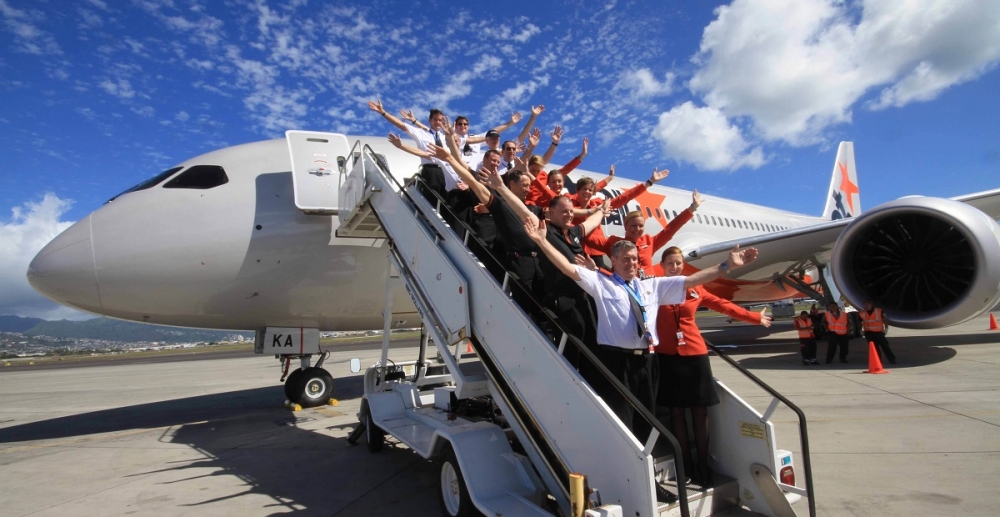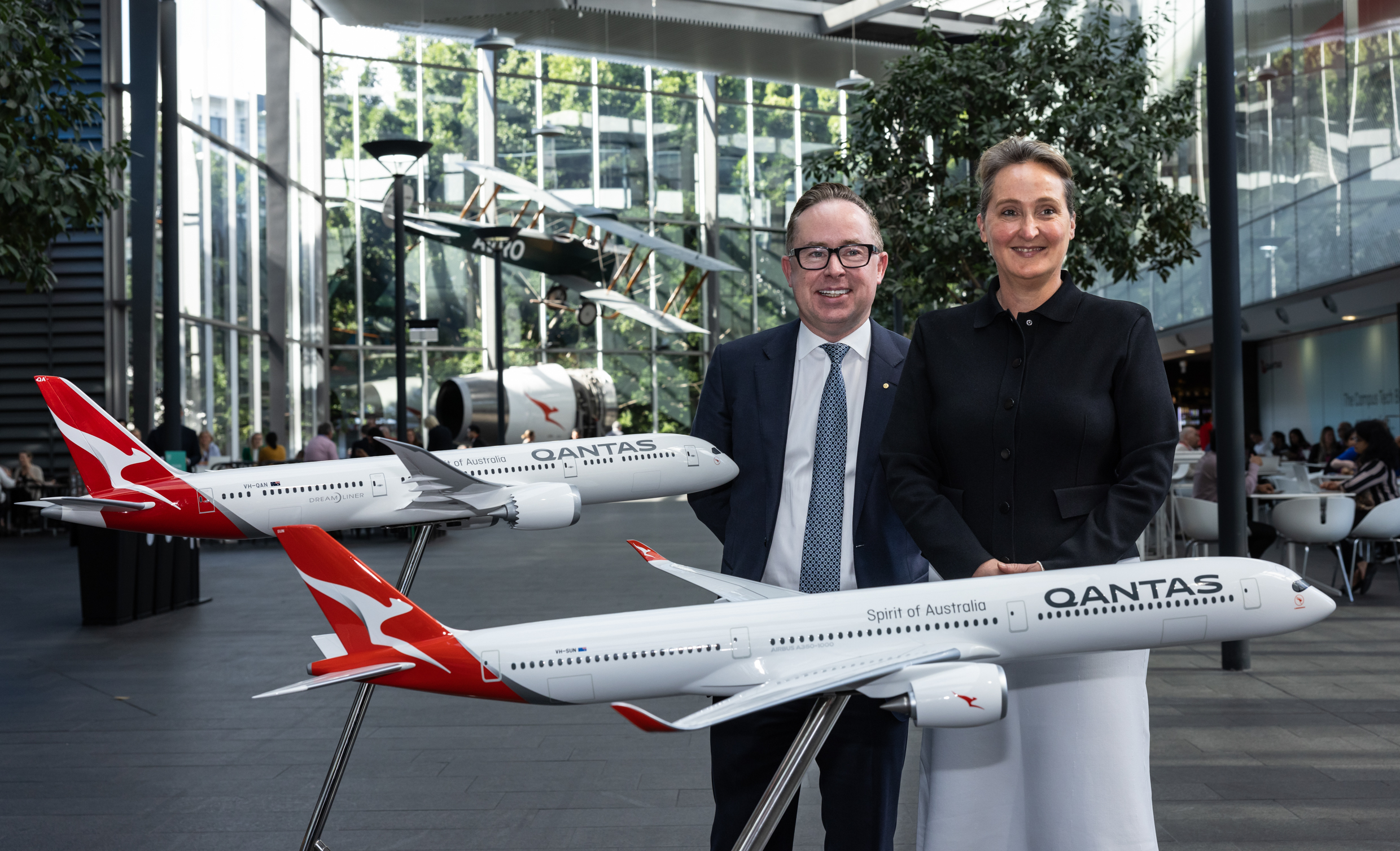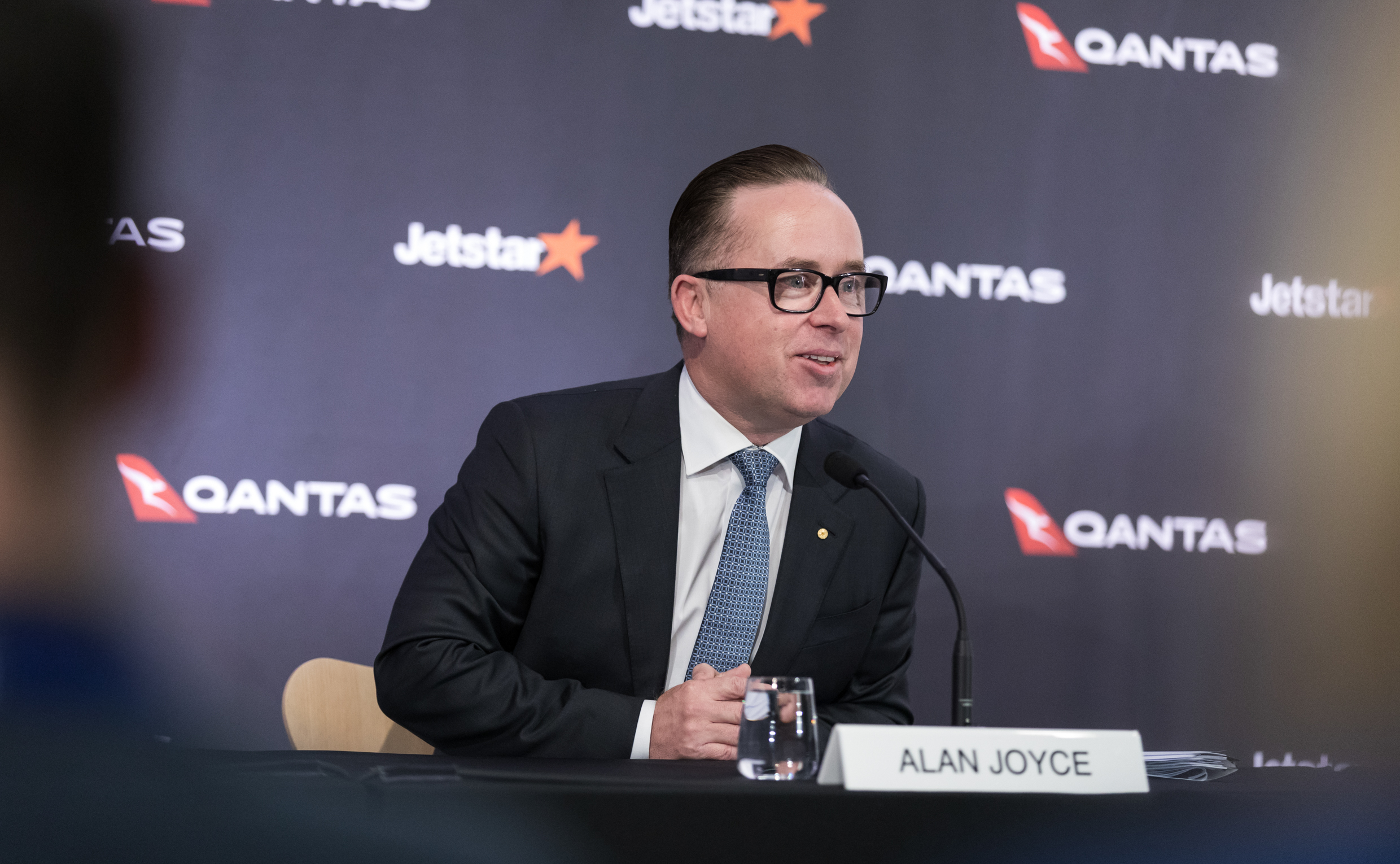The Real Story Behind The Lynching Of Qantas
30 November, 2023
15 min read
By joining our newsletter, you agree to our Privacy Policy


Never before has an airline - Qantas - and its CEO been subjected to so much misinformation and falsehood that when the truth emerges it is barely recognizable.
The recent trashing of Qantas and its CEO Alan Joyce, because of the global airline chaos post-pandemic, has been an example of the worst aspects of social media where the ill-informed public has dictated the coverage by too many media organisations more focused on online clicks than the truth.
That tsunami of negative press painted Mr Joyce as totally responsible for the post-COVID airline malaise and forced his early retirement as well as that of Qantas’s chairman the highly respected Richard Goyder.
History will show that the vilification of Mr Joyce is misplaced and in fact, it will be recognised that he more than any other of Qantas’s CEOs has restructured the airline so it can survive.
A ridiculous statement in the minds of many but we need to go back to the future to examine the historic dynamics that shaped Joyce’s tenure.
Historical Dynamics
In 1992 Qantas was in government hands and many criticised the airline for being moribund so the call was out to rejuvenate the airline through privatization. British Airways had been privatised in 1987 and was held up as a shining example of what could be achieved.
Responding to the failure of two de-regulated airlines Compass 1 & 11 and the need to bring stability and rejuvenation to the airline industry the Labor Government sold the domestic carrier Australian Airlines to Qantas in August 1992.
This provided Qantas access to the Australian domestic market and the airline was privatised in two stages, first by a sale of 25% to British Airways in 1993 and the remaining 75% by public float in mid-1995.
Total proceeds exceeded $4.5 billion in today’s dollars.
However, the management of the airline under the late James Strong was preoccupied with melding the two airlines together while providing shareholders with a return on their investment so important product and fleet enhancements were overlooked.
Qantas was also flying under the umbrella of government protection in the form of strictly controlled bi-laterals and a strong domestic exclusion policy.

A 2008 photo of then Qantas CEO Geoff Dixon with incoming CEO Alan Joyce. Geoffrey Thomas
While the two-airline policy had been dismantled, it was still a largely two-airline nation and the labour market was heavily unionised and inflexible as Ansett was to discover towards the end of its life.
Qantas did not embrace the push to seatback videos in economy, rejected the author’s attempts to persuade the airline to introduce premium economy and on seven occasions rejected the Boeing 777, the world’s most widely used and economical long-haul aircraft.
Thus, as the airline entered the new century its products were outdated and its aircraft not as efficient or flexible as its competitors.
And as the new century started Ansett was crumbling because its seat mile costs were double those of the new Virgin Blue, which had started operations in 1999 courtesy of a government decision to open the domestic market to foreign-owned airlines.
JOIN: AirlineRatings.com YouTube Channel
GET: Accurate MH370 Information From AirlineRatings.com Newsletter
With the collapse of Ansett in September 2001, Qantas was preoccupied with building its domestic fleet as quickly as possible and ordered 60 737s which had been cancelled by American Airlines after 9/11.
For the long-haul mission, the airline opted for the A380 and also ordered the A330 to help transition the airline to the Airbus world.
To match the emerging Virgin Blue, which boasted in 2004 that it was carrying as many passengers as Ansett with a third of the staff paid half the salaries, Qantas launched Jetstar.
Many airlines have tried to launch a low-cost airline within the structure of a legacy carrier but failed.

Mr Joyce was given the “mission impossible” job and succeeded in spectacular fashion.
Then British Airways chief Sir Rod Eddington sold off GO in 2002 because he said that the British Airways staff thought they did not have to make any changes while GO was flying.
When Mr Joyce was anointed successor to retiring Geoff Dixon, Qantas still carried considerable legacy baggage in labour contracts and products, although its fleet was to be boosted by an order for up to 65 787s for the group.
Pricing pressure was rising with the emergence of more low-cost airlines such as AirAsia X, the spectacular growth of the Middle East and Chinese giants, as well as the bankruptcy and then restructuring of its US competitors.
In the ten years to 2014, US pilots suffered a 40% pay cut as airlines restructured after filing for Chapter 11 bankruptcy protection.
Adding to the challenges, Asian-based carriers have lower labour costs, some as much as 1/7th those of Qantas.
And for Mr Joyce, it was not just a pay issue. The airline’s productivity was lagging.
Overarching these competitive cost trends was the relentless decline in airfares.
In 1988 when the famous film Rain Man aired with the “Qantas never crashes” line, 75% of passengers picked their airline by safety but 30 years later when Mr Joyce was in the captain’s seat it was just 25%.
Qantas could no longer bank on its safety record to keep yields high, pay its salary bills and support uncompetitive work practices.
Mr Joyce’s first acid test came in October 2011, when he grounded the airline in a massive face-off with three unions representing ground handlers, engineers and pilots. The Australian government stepped in and stopped the action of all parties after two days, and early the year after, Qantas won its case.
The next test came with the 787s for Qantas and Mr Joyce was able to get the pilots to agree to work a greater number of hours on the aircraft.
COVID Devastation
The chaos that was wreaked upon aviation was unprecedented and is largely misunderstood outside the industry.
According to IATA 86 airlines went into bankruptcy or administration, 46 million people in the airline and tourism industries lost their jobs and airlines lost A$300 billion.
Over 14,000 mainly widebody aircraft were grounded virtually overnight as the industry shut down, while well-oiled supply chains collapsed.
When COVID hit in 2020, Mr Joyce agreed to stay on to steer the airline through the pandemic and the airline set about a multi-billion cost-saving program to survive.
In April 2020 Qantas was just 11 weeks away from bankruptcy while the airline’s debt peaked at A$6.4 billion during the pandemic.
One area of attention was its baggage handlers and in August 2020 the airline announced an outsourcing of that function at 10 airports around Australia where it did the work in-house at the time with a projected annual saving of $100 million in operating costs. The 1,700 staff were offered and did bid for the work but were found to be uncompetitive.
Later it would be deemed by the Australian courts that the move, under the country’s complex Fair Work Act, was unlawful, although the judge said that the airline made the decision on legitimate business grounds.
That decision would come back to haunt Qantas as it was a big win for unions in their effort to portray the airline as uncaring and ruthless.
The airline did receive a total of about A$2.5 billion in assistance during COVID with about half used for contracts to keep the airline flying a limited mainly domestic network for cargo, mail and a handful of passengers. The balance was for a “Job Keeper” allowance to retain some staff.
Keeping all staff on would have cost over A$12 billion for the two years of COVID lockdown.
Qantas was forced to sell many of its 787s on a lease-back arrangement as well as property near its headquarters to survive.

During the pandemic Qantas faced a unique situation in which different states opened and shut their borders often with little notice, responding to outbreaks and then the need for the containment of COVID.
Over the two years of the pandemic, Qantas was forced to change its schedule 90 times creating havoc for the airline and its workers and costing tens of millions.
When Australia did finally open all its domestic and then international borders, the country’s airlines were hit by a tsunami of revenge travel.
Millions of Australians scrambled to book tickets, while those with travel credits choked call centres with rebooking.
Qantas had to process more than 415,000 itinerary changes in the months of February and March 2022 alone.
Chaos ensued with chronic staff shortages and ongoing COVID-19 illness across all airline suppliers creating havoc.
The media in Australia went into overdrive responding to social media posts and tweets about delays, lost baggage and ruined trips.
Mr Joyce at the time famously said about long security queues that passengers weren’t “match fit” but the stark reality was the airline industry across the globe wasn’t fit at all.
Social Media Power
Mr Joyce, who is openly gay and an advocate for a range of sometimes controversial causes became a huge target for online social media abuse.
One newspaper received a number of vile letters critical of Mr Joyce, prompting the Editor-In-Chief to ask his Business Editor to “give me an article criticising Alan Joyce.”
According to reports from SproutSocial.com and Deloitte, 75% of consumers say that social media gives them power while 47% use it to complain. The two organisations also report that 60% of the world uses social media.
In Australia media companies chasing online clicks pounced on every misstep from Qantas, virtually ignoring Virgin Australia, which had similar issues and they largely ignored the fact that it was a global problem.

Alan Joyce and incoming CEO Vanessa Hudson. Qantas
Quickly all rational debate was forgotten and unless analysts and commentators were following the narrative they were ignored or even in some cases criticised by the interviewer.
The furore forced Mr Joyce to retire ahead of the scheduled Qantas AGM in November, but rather than defuse the situation, the union movement turned their venom on the airlines’ chairman Richard Goyder, who also announced he would retire at the 2024 AGM.
Next came a Senate Inquiry which quickly degenerated into a Shakespearean tragedy with politicians clamouring for the best TV grab. The head of the inquiry, controversial Senator Bridget McKenzie, even called for Qantas to be broken up.
ACCC Action
Complicating matters for Qantas, Australia’s consumer watchdog the Australian Competition and Consumer Commission took the airline to court over alleged “ghost flights” in 2022. It claimed that Qantas was selling tickets on non-existent flights for profit.
The ACCC’s case relates to flights that Qantas cancelled that were left on sale for longer than 48 hours. This occurred when the airline was forced to take 20 aircraft out of service to be used for backups for flight disruptions caused by shortages of spare parts.
While this occurred, some flights were left in the system too long but Qantas claims that 100% of impacted domestic passengers were offered same-day flights departing prior to or within one hour after their scheduled departure time. The airline adds that 98% of impacted international passengers were offered reaccommodating options on flights within a day of their scheduled departure date.
In virtually all cases flight changes were made weeks and months ahead giving passengers plenty of time to make minor adjustments to their travel plans.
But the lay media was having none of that explanation and portrayed Qantas as uncaring, ruthless and solely focused on profit.
Not helping the profit aspect was the airline reporting an all-time record underlying profit for FY23 of A$2.47 billion and a Statutory After-Tax Profit of A$1.74 billion. That was a significant reversal from the A$7 billion in accumulated statutory losses over three prior years.
With that came renewed focus on Mr Joyce’s final payout for the FY23 year which was $23.6 million.
However much of that is long-term bonuses withheld during COVID. What has been ignored is that Mr Joyce took Qantas’s share price in 2009 from $A1.70 to A$7.35 just as the ill winds of COVID started to swirl around.
Ignored in the social media attacks was that according to the Australian Financial Review, Mr Joyce’s base salary was just $2.3 million, against the median of the top 300 ASX-listed executives in Australia of $2.7 million.

Qantas Chairman Richard Goyder and CEO Vanessa Hudson at the airline 2023 AGM. Qantas
Union Discord
At the core of the lynching of Qantas and its CEO are some unions that have orchestrated a very effective media campaign against the airline that goes back years as they fight the changes that are necessary for the airline’s survival.
Australia’s leading analyst and the founder of Centre for Aviation Peter Harbison summed up the situation by saying Qantas has never had the luxury of going bankrupt where it could start again with new labour contracts at more competitive rates.
Mr Harbison told Asian Airlines and Aerospace that “when judging Qantas’ performance over the last couple of decades, some important factors are being entirely buried in the current [media] discourse.
“There’s one important fact that’s being overlooked and that is almost every airline Qantas competes with has either been bankrupted during the past two decades or is government-owned. It’s hard to think of a single airline that doesn’t fit into one or other of these categories,” Mr Harbison said.
He added that many airlines in Asia have much lower labour costs and more productive staff than Qantas.
“All the major US international airlines have gone through Chapter 11 bankruptcy, as has Air Canada. In this region, almost without exception, it’s either government ownership or bankruptcy, or both, that has secured the airlines’ survival.
Among all this carnage, only Qantas has survived them all and, by going the difficult course, its cost base is greatly reduced thus it is in a position to survive. It wasn’t an accident.
“The significance of Chapter 11 bankruptcy is that aside from destroying all shareholder equity, it allows the surviving airline to return to the market with greatly reduced costs and a totally refreshed workforce. Essentially, the airline can start again from scratch. Staff are cut, wages reduced, contracts cancelled or shaved.”
Mr Harbison sums up by saying “Qantas never had this luxury. Under Joyce, it did it the hard way, but seriously, would it have been better for everyone if the airline had simply gone broke like all the others?”
In the fullness of time, Mr Joyce will be seen to be the best chief executive Qantas has had to this point in time. His successor Vanessa Hudson faces huge challenges with a union movement that has tasted blood and wants higher salaries and better conditions for staff that in many cases are amongst the world’s highest paid in the airline industry.
Ms Hudson also has to battle the disenchantment and often rage felt by the public who have swallowed the social media misinformation campaign and the lay media’s misguided reporting.

Next Article
Virgin gets nod for Tiger deal

Get the latest news and updates straight to your inbox
No spam, no hassle, no fuss, just airline news direct to you.
By joining our newsletter, you agree to our Privacy Policy
Find us on social media
Comments
No comments yet, be the first to write one.

